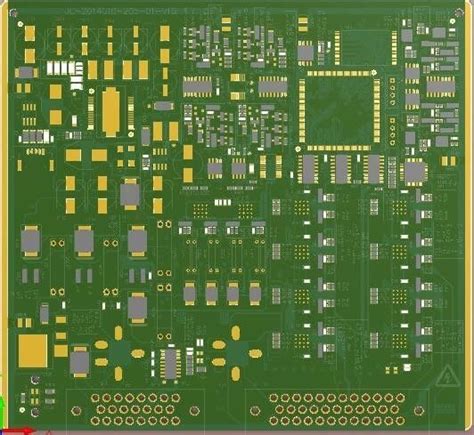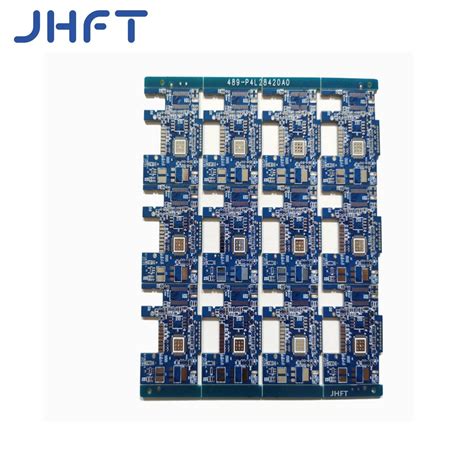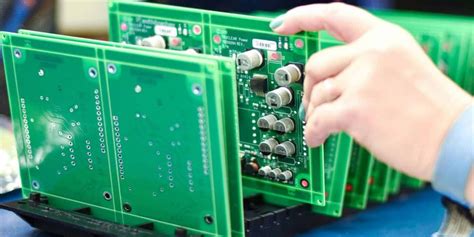Unleashing Innovation: The Power of Custom Flex PCBs
Key Takeaways
Understanding custom flex PCBs is essential for anyone involved in the electronics industry, as they represent a significant leap forward in modern design capabilities. Unlike traditional rigid circuit boards, flexible printed circuits (PCBs) can be bent or shaped without compromising their functionality. This adaptability opens up a myriad of opportunities for designers and engineers. Not only do custom flex PCBs offer enhanced space efficiency, but they also reduce the overall pcb manufacturing cost by minimizing the number of interconnections needed. As you explore various pcb manufacturing companies, you will find that many are now specializing in these advanced circuits, recognizing their advantages across numerous applications—from consumer electronics to medical devices and automotive systems. If you’re looking to venture into the pcb manufacturing business, understanding these advantages will be key to staying competitive. The engineering behind these flexible designs involves innovative materials and cutting-edge technology that contribute to reduced weight and improved performance—attributes that are increasingly sought after in today’s fast-paced market. By utilizing custom flex PCBs, you can not only enhance product designs but also align with future trends that embrace flexibility and integration in electronics.
Introduction to Custom Flex PCBs: Revolutionizing Electronics
In today’s rapidly evolving tech landscape, custom flex PCBs are at the forefront of innovation, redefining the possibilities of electronic design. These flexible printed circuit boards offer distinct advantages that traditional rigid PCBs cannot match. With their ability to bend, twist, and adapt to various shapes and sizes, custom flex PCBs open doors to creative solutions in a variety of applications, from wearable technology to smart devices.
You may wonder how they achieve this level of flexibility and durability. The secret lies in the materials used during pcb manufacturing. Many pcb manufacturing companies are utilizing advanced polymers and unique layering techniques that enhance flexibility while maintaining circuit integrity. This not only reduces the overall weight of electronic devices but also minimizes space requirements, making them ideal for compact designs.
Furthermore, the pcb manufacturing cost associated with producing these advanced circuits has seen a decrease due to improved technologies and processes in the pcb manufacturing business. As these technologies continue to develop, you can expect an increase in affordable options that attract more industries looking for innovative design solutions.
“Inflexible designs are a barrier to creativity; embrace customization and flexibility for superior outcomes.”
As you explore the realm of custom flex PCBs, consider how this technology can elevate your projects and push the boundaries of what is possible in modern electronics.
Advantages of Custom Flex PCBs in Modern Design
In today’s rapidly advancing technological landscape, custom flex PCBs emerge as a game-changer in the realm of electronics design. By offering unparalleled flexibility, these circuits allow you to create compact and lightweight products that would be challenging to achieve with traditional rigid boards. The primary advantage you can leverage is the ability to optimize pcb manufacturing costs, as custom designs reduce the need for bulky components and complex assembly processes.
Furthermore, with rising demands for innovative designs across various industries, including wearable technology, automotive applications, and medical devices, custom flex PCBs enhance your product functionality while ensuring durability. As you navigate through options provided by various pcb manufacturing companies, it’s essential to consider how these adaptable circuits not only simplify assembly but also enable intricate layouts that adhere to unique shapes and contours of modern devices. This adaptability significantly reduces pcb manufacturing business hurdles by allowing for rapid prototyping and tailored solutions suited precisely to your project needs.
Incorporating custom flex PCBs into your designs not only promotes efficiency during production but also paves the way for ground-breaking concepts that push the boundaries of standard electronics. This evolution towards flexible circuits is transforming how industries approach design challenges and opportunities for innovation, ensuring a robust foundation for future advancements in technology. Explore how embracing this technology can lead to remarkable product breakthroughs by consulting resources like Andwin PCB.
Key Applications of Custom Flex PCBs Across Industries
Custom flex PCBs have become integral to numerous sectors, allowing for innovative designs that traditional PCB manufacturing cannot achieve. In the realm of consumer electronics, for instance, your devices are becoming slimmer and more efficient thanks to the adaptability of flexible circuits. The pcb manufacturing cost often aligns with the ability to create compact, lightweight products without compromising functionality. In the medical industry, custom flex PCBs enable portable diagnostic devices that can bend and fit into small spaces, enhancing patient care while keeping production costs manageable for pcb manufacturing companies. Automotive applications also benefit significantly; flexible circuits contribute to reducing weight in wiring systems while ensuring durability in demanding conditions. The aerospace industry utilizes these flexible circuits for their lightweight and robust design characteristics, essential for both performance and fuel efficiency. As you explore how different industries employ custom flex PCBs, you’ll notice how they transform ideas into reality, highlighting the promising future of the pcb manufacturing business landscape where adaptability is key to staying ahead.
The Engineering Behind Flexible Circuits: Materials and Design
The design and engineering of custom flex PCBs hinge on the selection of materials that optimize performance while ensuring flexibility. At the core of these flexible circuits are substrates such as polyimide and polyester, which possess excellent thermal stability, chemical resistance, and superior dielectric properties. These materials allow for more innovative geometric designs that traditional rigid PCBs cannot accommodate. When you consider pcb manufacturing, the intricate layering of these substrates paired with specialized conductive inks forms the backbone of flexible circuit design.
A key factor in this process is collaboration between pcb manufacturing companies to advance techniques in etching, lamination, and assembly. By integrating advanced methodologies, these companies can significantly affect the pcb manufacturing cost, enabling a broader array of applications—from smartphones to wearable technology. As you delve deeper into the pcb manufacturing business, understanding how material properties affect both function and manufacturability will allow you to leverage the full potential of your designs.
As technology evolves, so does the demand for customized solutions that prioritize efficiency without sacrificing quality. Therefore, as you explore designs for your next project, keep in mind that your decision on materials not only influences durability but also plays a pivotal role in final production outcomes and project success.
Future Trends: What’s Next for Custom Flex PCBs?
As the demand for custom flex PCBs continues to grow, several future trends are poised to shape the landscape of pcb manufacturing. One notable trend is the increasing integration of IoT (Internet of Things) technologies, prompting pcb manufacturing companies to innovate their designs for enhanced connectivity and functionality. This shift not only supports smaller and more complex devices but also drives down pcb manufacturing costs through economies of scale. Furthermore, sustainability in materials used in pcb manufacturing is becoming a focal point, with manufacturers increasingly seeking biodegradable or recyclable materials that align with global environmental goals. As you look ahead, consider how advancements in automation and machine learning within the pcb manufacturing business can optimize production processes, leading to faster turnaround times and improved quality control. This evolution promises a more efficient landscape, where your projects can benefit from cost-effective solutions without compromising on performance or design flexibility. Ultimately, embracing these trends will enable you to remain competitive and innovative in an ever-evolving market.
Case Studies: Success Stories Using Custom Flex PCB Technology
The impact of custom flex PCBs has been profound across various sectors, showcasing their adaptability and functionality in real-world applications. In the medical industry, for instance, one leading company utilized flexible printed circuit boards in wearable health monitoring devices. This innovation allowed for a seamless fit to the human body while ensuring reliable performance. By collaborating with specialized pcb manufacturing companies, they were able to significantly reduce pcb manufacturing costs without compromising quality, which enhanced accessibility to cutting-edge medical technology.
Meanwhile, the automotive sector has also embraced custom flex PCBs, particularly in electric vehicle designs, where space optimization is crucial. An industry player succeeded in integrating flex circuits within compact battery management systems, streamlining production and reducing pcb manufacturing costs. This adaptability resulted from cooperating with adept pcb manufacturing businesses that understand the nuances of flexible circuit requirements.
In consumer electronics, a notable startup reinvented the approach to smartphone interfaces by employing custom flex PCB technology. This led to a reduction in device thickness while improving durability and performance rates. Their strategic partnerships with reliable pcb manufacturing companies facilitated efficient prototypes and rapid production scaling.
These success stories illustrate that leveraging custom flex PCBs not only resolves design challenges but also positions businesses at the forefront of innovation while managing pcb manufacturing costs effectively. The ability to create sleek and efficient circuitry opens new avenues for product design across various industries, demonstrating how flexible solutions yield extraordinary results.
Overcoming Challenges in Custom Flex PCB Manufacturing
In the realm of pcb manufacturing, you may encounter several challenges that require innovative approaches to overcome. One of the primary issues is the complexity involved in design and production processes. Custom flex PCBs, known for their adaptability and lightweight properties, demand precise engineering techniques that can drive up the pcb manufacturing cost. This is particularly pertinent when working with intricate layouts and multi-layered designs. Additionally, sourcing high-quality materials is essential, as it directly impacts both the reliability and performance of your product. Engaging with reputable pcb manufacturing companies can alleviate some of these hurdles, as they often possess advanced capabilities in material selection and fabrication techniques. Furthermore, ensuring that your project meets industry standards and regulatory requirements can be a daunting task but is critical to the successful completion of your pcb manufacturing business goals. By understanding these challenges and taking proactive steps to mitigate them, you can position yourself for success in a competitive market while harnessing the transformative potential of custom flex PCBs.
Conclusion: Embracing the Potential of Custom Flex PCBs
In the ever-evolving landscape of electronics, custom flex PCBs represent a pivotal innovation, offering unique solutions that challenge conventional design limitations. As you consider the potential of these flexible circuits, it’s essential to acknowledge their significant impact on pcb manufacturing processes. This technology enables manufacturers to create lightweight, compact, and highly adaptable designs that meet the demands of various industries, from consumer electronics to medical devices. While examining pcb manufacturing companies, you’ll find that these organizations are increasingly adopting custom flex solutions to stay competitive and drive technological advancements. The pcb manufacturing cost associated with these innovative products may be higher in some cases, but the long-term benefits—including enhanced functionality and reduced space requirements—often outweigh initial expenditures. As you navigate your own pcb manufacturing business, embracing these advancements can position you at the forefront of industry transformation, opening doors to new opportunities and applications that were previously unimaginable. By integrating custom flex PCBs into your projects, you’ll not only enhance your designs but also contribute to a more flexible and innovative future in electronics.
Conclusion: Embracing the Potential of Custom Flex PCBs
As you reflect on the transformative impact of custom flex PCBs, it’s clear that they hold immense potential in reshaping the landscape of modern electronics. Their adaptability and lightweight nature allow for unprecedented flexibility in design, which is becoming increasingly important in today’s fast-paced technological environment. Working with PCB manufacturing companies that specialize in these sophisticated flexible circuits can often lead to innovative product solutions that meet specific consumer needs. Moreover, understanding the PCB manufacturing cost associated with custom designs can empower you to make informed decisions for your projects, balancing performance with budget considerations. By embracing the capabilities of custom flex PCBs, you position your business to thrive within an ever-evolving market, ready to capitalize on new opportunities and drive forward with creative solutions. Whether you are navigating complex challenges or exploring new applications across various sectors, integrating these advanced circuits into your designs can enhance functionality while streamlining production processes. Ultimately, engaging with this cutting-edge technology can define the future trajectory of your PCB manufacturing business, unlocking pathways to innovation that were previously unimagined.
FAQs
What are Custom Flex PCBs?
Custom flex PCBs, or flexible printed circuit boards, are a type of electronic circuit that can bend and flex in various applications. Their unique designs allow for innovative integration into compact and dynamic environments.
How do I choose the right PCB manufacturing company?
When selecting a pcb manufacturing company, consider their experience, reputation, and the technology they employ. It’s essential to evaluate their quality assurance processes and customer feedback to ensure they meet your specific needs.
What factors influence PCB manufacturing costs?
Several factors impact pcb manufacturing costs, including material selection, complexity of the design, quantity produced, and any special requirements such as surface finishes or testing processes.
Can I find flexible PCBs suitable for various industries?
Absolutely! Custom flex PCBs are adaptable for multiple sectors such as healthcare, automotive, consumer electronics, and aerospace. Their versatility makes them ideal for modern applications that demand innovative solutions.
What should I consider for my PCB manufacturing business?
If you’re entering the pcb manufacturing business, it’s crucial to assess market demand, invest in reliable technology, and build strong relationships with suppliers. Keeping up with industry trends can also provide a competitive advantage.







